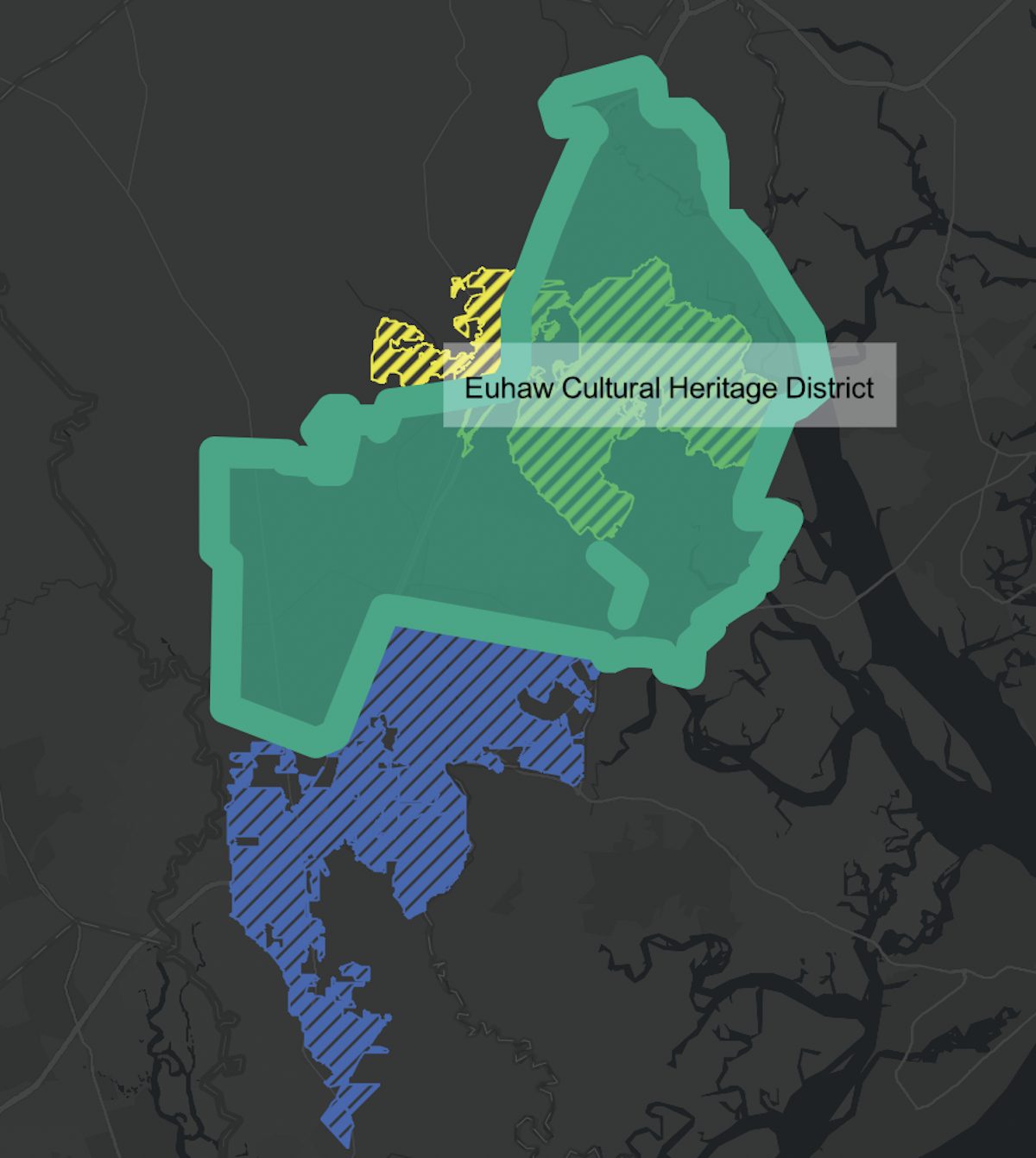Proposed Euhaw Cultural Heritage District would keep large part of county rural
By Scott Graber
The Island News
On October 7, 1996 — in the Lassiter Theater on Marine Corps Air Station Beaufort — Tom Taylor, then Beaufort County Council Chair, gave the public its first look at the just completed “Comprehensive Plan” for future growth.
That plan, envisioned by Elizabeth Brabec and her team at Land Ethics based in Annapolis, Md., had been in gestation for many months. The fundamental issue that night was “density” — what density was going to be ascribed to those parts of Beaufort County that were still rural?
Tom Taylor announced that, in rural areas, the Comprehensive Plan would allow one house for every three acres. Although there was no noticeable howl of protest in the auditorium that night, developers, builders and realtors immediately joined forces to diminish the 1996 plan. In fact, Beaufort, Bluffton and Port Royal would use the “Plan” as an accelerant to fuel their plans for annexation of nearby properties.
Jasper County has been watching development in Beaufort County for years; and for years it has been troubled by the residential/gated community growth down Highway 278 that is now spreading into the Chelsea and Okatie precincts of northern Jasper County.
Jasper is so concerned that its County Council put a moratorium on development in June of 2023.
Now, Jasper County Council has announced its intent to rezone a large swath of rural geography putting that topography into what it calls the Euhaw Cultural Heritage District to be accompanied by zoning that would allow one dwelling unit for every 10 acres.
This new overlay district involves rural lands lying to the east of I-95 in Jasper County, and extending from the Coosawhatchie River down to Hardeeville along Highway 170 and sharing a border with the with the Broad River.
The prevalent classification is called “Rural Preservation-10” which allows one unit (house) for every 10 acres. The current density is one house per acre. This zoning will also ban heavy industry, as well as Bluffton-inspired sprawl and Hilton Head-styled resort development.
The proposed Rural Preservation-10 would cover most of Chelsea Plantation (2,442 acres) and the Okeetee Club properties (50,000 acres). Rapidly expanding Hardeeville and the Town of Ridgeland would be excluded from the District but Jasper’s headwaters adjacent to the Port Royal Sound would be protected.
This new District also proposes a new zoning classification called, “Village Commercial” that will permit small businesses, retail and churches in places like Cooler’s Corner. There will also be an exemption for traditional clusters of houses much like the “Family Compound” exemption in Beaufort County’s Code.
In this connection, the South Carolina Coastal Conservation League has requested that golf courses be made a conditional activity and that marinas be removed altogether.
Notwithstanding this new District and its prohibitions, we have seen that these downzoning changes are usually fiercely fought by developers who sometimes say this amounts to a “taking” (by the government) without compensation.
But in the case of Jasper County there has been unparalleled growth along Highway 278 as developers file their annexation petitions with the Town of Hardeeville. It is likely that the urbanization (or suburbanization) of the right of way between Hilton Head and Hardeeville was largely responsible for Jasper’s moratorium and will be the justification argument for the passage of the Euhaw Cultural Overlay District and its attendant zoning.
At 5 p.m., on Thursday, Sept. 19, 2024, there will be a public hearing focused on this change in zoning before Jasper County Council at the Port Royal Maritime Center on Highway 170.
Scott Graber is a lawyer, novelist, veteran columnist and longtime resident of Port Royal. He can be reached at cscottgraber@gmail.com.








